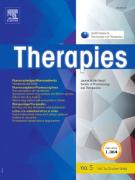Calcium channel blocker exposure and psoriasis risk: Pharmacovigilance investigation and literature data - 29/01/21
 , Delphine Laugier-Castellan c, Paola Sanchez-Pena d, Marie Rouault e, Lukshe Kanagaratnam b, Aurore Morel a, Thierry Trenque a, b
, Delphine Laugier-Castellan c, Paola Sanchez-Pena d, Marie Rouault e, Lukshe Kanagaratnam b, Aurore Morel a, Thierry Trenque a, b| pages | 7 |
| Iconographies | 0 |
| Vidéos | 0 |
| Autres | 0 |
Summary |
Introduction |
Evidence regarding a possible association between psoriatic manifestations and use of calcium channel blockers (CCBs) is sparse. Currently, psoriatic manifestations are not listed in the summary of product characteristics (SmPC) of CCBs. In this context, we aimed to investigate the association between psoriasis and CCB exposure.
Methods |
We reviewed spontaneous reports recorded in the French national pharmacovigilance database (FPVD) between 1985 and 2019. The association between CCB exposure and risk of psoriasis was assessed using the case/non-case method. We also analyzed literature data.
Results |
Ninety-four reports of psoriatic manifestations after CCB exposure were recorded in the FPVD. Both induction and exacerbation cases were observed. Time to onset was less than 2 years in 64% of reports and outcome was favorable in 71% of reports after CCB discontinuation. These features were concordant with those of literature reports. The reporting odds ratio (ROR) was 2.45 (95% CI 1.99–3.02). Concomitant use of betablockers or angiotensin II receptor blockers did not interact with the association between CCB exposure and psoriasis risk. The ROR for the stratum “use of angiotensin converting enzyme inhibitors” (ACEI) was 2.14 (95% CI 1.29–3.55), while the ROR for the stratum ACEI non-use was 0.12 (95% CI 0.10–0.15). Large-scale epidemiologic studies were focused only on first diagnoses and did not include exacerbations; psoriasis risk was therefore probably underestimated.
Conclusion |
We found a statistically significant association between CCB exposure and psoriasis risk, which constitutes a safety signal. This risk is a class effect, time to onset is mostly less than 2 years and outcome is favorable after CCB discontinuation. Psoriasis should be mentioned in the SmPCs of all CCBs, and healthcare workers should be aware of this risk. Attention should be paid to patients taking CCB and ACEI concomitantly.
Le texte complet de cet article est disponible en PDF.Keywords : Calcium channel blockers, Psoriasis, Pharmacovigilance
Plan
Vol 76 - N° 1
P. 5-11 - janvier 2021 Retour au numéroBienvenue sur EM-consulte, la référence des professionnels de santé.
L’accès au texte intégral de cet article nécessite un abonnement.
Bienvenue sur EM-consulte, la référence des professionnels de santé.
L’achat d’article à l’unité est indisponible à l’heure actuelle.
Déjà abonné à cette revue ?

